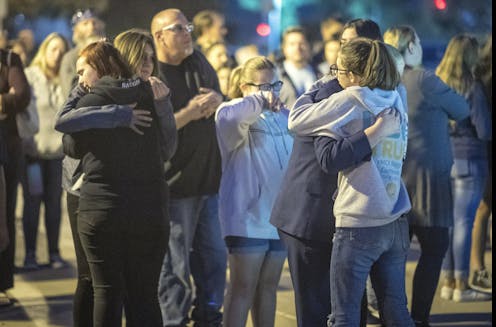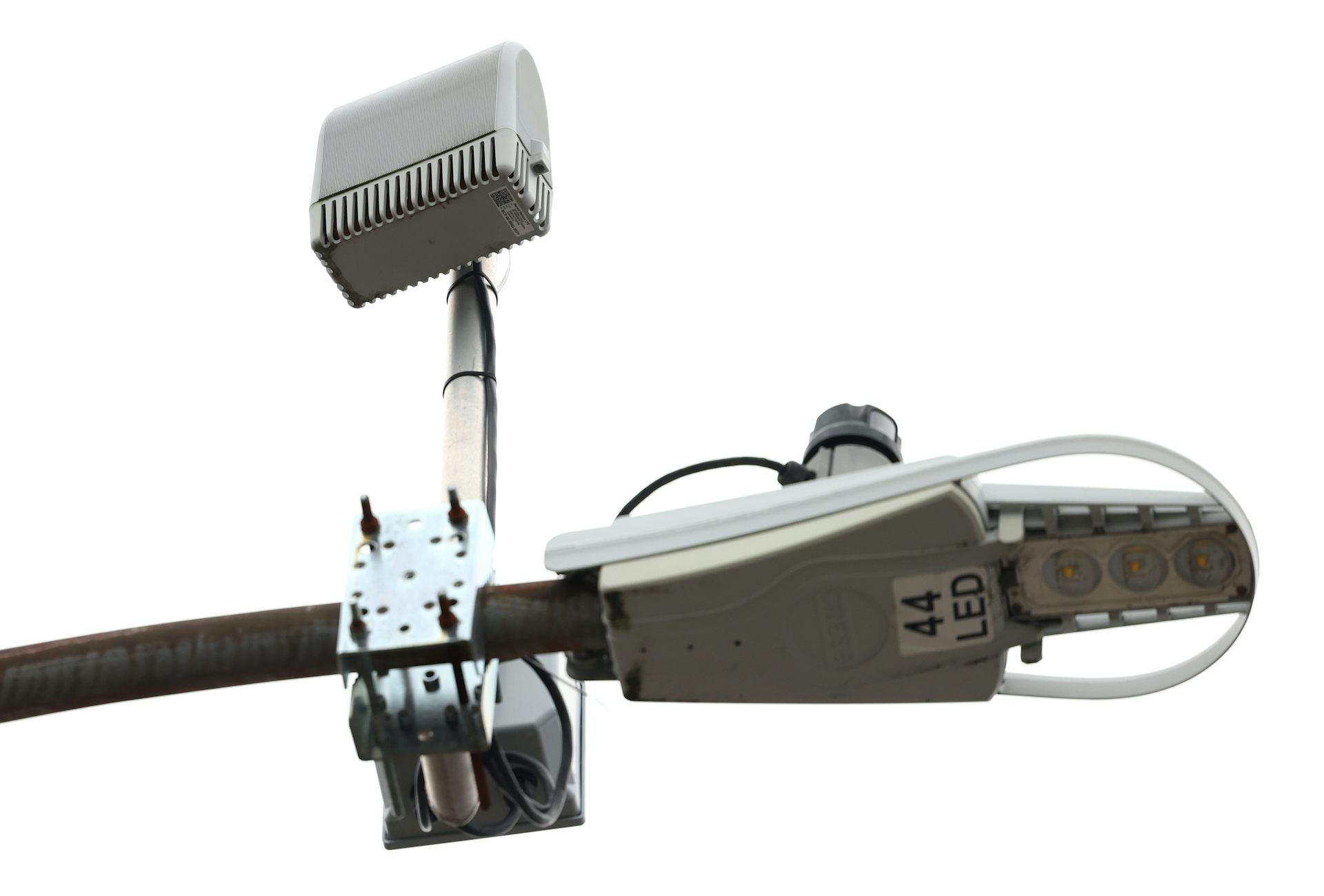Knoxville school shooting serves as stark reminder of a familiar – but preventable – threat
The pandemic largely gave America a reprieve from school shootings. Two criminologists say gun violence could return to America's schools worse than before as in-person classes resume.

With most U.S. students having learned virtually in 2020 because of the pandemic, the nation logged a record low for school shootings. There were just three deaths in a total of 10 school shootings in all of 2020.
This compares with eight deaths in 25 school shootings in 2019.
Now, as students return to schools for in-person instruction, the specter of school shootings is back. This was evidenced in the April 12 school shooting at the Austin-East Magnet High School in Knoxville, Tennessee. The shooting left one student dead and an school resource officer injured.
As criminologists and authors of a new book, “The Violence Project: How to Stop A Mass Shooting Epidemic,” we worry that gun violence at America’s schools may be even more likely in 2021 than before the pandemic because of a number of exacerbated risk factors for violence.
Young people’s mental health suffered during the pandemic. And some youths were trapped in homes where they endured abuse. As we point out in “Trauma,” a chapter in our book, children who experience abuse in childhood are more likely to commit violence later in life.
Meanwhile, there was a record number of gun sales in 2020, driven in part by the pandemic and civil unrest after the killing of George Floyd last summer. As a result, students may now have more access than ever to firearms.
Ominous statistics
The Knoxville school shooting on April 12 was the 37th school shooting of 2021, according to the Center for Homeland Defense and Security’s K-12 School Shooting Database. The database includes information on “each and every instance a gun is brandished, is fired, or a bullet hits school property for any reason, regardless of the number of victims, time of day, or day of week.” Year-to-date comparisons are complicated, because not all school districts went to remote or hybrid learning at the same time or to the same degree.
Taking a narrower view of shootings with injuries or deaths that occurred while school was in session, it was the fourth school shooting of 2021 and second fatal shooting of the year.
The phrase “school shooting” typically is reserved for mass casualty events like the 1999 Columbine High School shooting, the 2012 Sandy Hook Elementary School shooting and the 2018 Parkland high school shooting. But talking about school shootings only when multiple people die in them minimizes the great harm guns cause in schools and to children all the time.
Response in the UK
Twenty-five years ago, in March 1996, a gunman walked into Scotland’s Dunblane Primary School and opened fire, killing 16 children and a teacher. A successful campaign for gun regulation followed, laws were changed, handguns were banned and the United Kingdom hasn’t had a school shooting since.
Yet in America, a gun is brandished on one K-12 school campus or another every two to three days. From 2015 to 2018, there was an “active shooter” – someone actively engaged in killing or attempting to kill people in a populated area – on U.S. school property every 77 days. Since 1970, over 1,600 school shootings have claimed the lives of 599 people as of April 13, 2021.
Before the pandemic, many parents had become resigned to sending their children to schools that have active shooter drills to rehearse for a real shooting incident. Some even bought bulletproof backpacks for their children.
Searching for solutions
Our research on school shootings, consistent with research from the U.S. Secret Service, shows that schools can do more than just accept an America where “back to school” means back to school shootings, even without an act of Congress to potentially stop gun violence. We’ve spent the last four years examining the lives of school shooters, searching for solutions. Our findings are freely available in a database we created with a grant from the U.S. Department of Justice.
The data shows, importantly, that school shooters tend to be current or former students of the school. They are almost always in crisis of some sort before their attack, indicated by a noticeable change in behavior from usual. Often this manifests in suicidal thoughts. School shooters also tend to leak their plans for violence in advance, mostly to their peers, often via social media.
And school shooters usually get their guns from family and friends who failed to store them safely and securely. It’s unclear at this point how well the Knoxville shooter fits this profile, but these findings point to important avenues for school shooting prevention.
Beyond school police
First, if school shooters are nearly always students of the school, then educators and others who work with them may need to work harder to find ways to identify and counsel them long before they ever pick up a gun. The existing US$3 billion “homeroom security” industry is predicated on putting up walls to keep active shooters out, rather than building bridges to keep actual students connected. Some school districts rely on school resource officers, or SROs, to police student problems to such an extent that the ACLU estimates that millions of students are in schools with police but no counselors, school psychologists or social workers.
SROs have intervened in school shootings in the past, including the one in Knoxville on April 12, but we believe they are yet another example of society’s overreliance on police to solve systemic social problems, from mental illness to homelessness to drug abuse. Research shows the presence of police officers in schools feeds a larger social problem known as the “school-to-prison pipeline,” in which even minor infractions at school are handled by the criminal justice system.
In a February 2021 study, we examined 133 attempted and completed mass school shootings from 1980 to 2019 and, controlling for other factors like the school size, the number of shooters, and the number and type of firearms, we found that the death rate for victims – that is, the perpetrator being excluded – was three times greater in school shootings with armed guards on the scene.
Research has shown that the presence of officers’ weapons increases aggression – it is known as the “weapons effect.” This effect may be further exacerbated by the fact that many school shooters are suicidal and may intend to provoke law enforcement into shooting them. This occurrence is known as “suicide by cop.”
Toward a future without school shootings
Even if many lawmakers would like to see more guns in schools through the arming of teachers, we feel it is not a solution. This logic runs counter to our research, which shows that warm and welcoming school environments where all students feel safe and supported are the foundation upon which good school security is built.
In our view, counselors, social workers, peer support networks and small class sizes are what schools need most right now to prevent violence after a pandemic. They can emphasize strong and trusting relationships between students and adults and teach students empathy and alternatives to violence as a means of dispute resolution.
School personnel and students need training to identify a student in crisis and describe how to report something they see or hear indicative of violent intent. Educators need new tools to help identify students before they become a threat. This means not unduly punishing students in crisis with expulsion or criminal charges – things that could escalate the crisis or any grievance with the institution.
[Over 100,000 readers rely on The Conversation’s newsletter to understand the world. Sign up today.]
And as students go back to school, safe gun storage at home is a paramount.
School shootings are not inevitable. They’re preventable. We believe the steps outlined above help promote school security while safeguarding student well-being.
James Densley has received funding from the National Institute of Justice. He is affiliated with The Violence Project.
Jillian Peterson receives funding from the National Institute of Justice. She is affiliated with The Violence Project.
Read These Next
RFK Jr. wants to scrutinize the vaccine schedule – but its safety record is already decades long
Federal officials are questioning the safety of the vaccine series children receive. Here’s the story…
Understanding climate change in America: Skepticism, dogmatism and personal experience
Real skeptics study the evidence and ask questions, rather than taking political dogma on faith. Experiencing…
Rest is essential during the holidays, but it may mean getting active, not crashing on the couch
Unwinding can be hard during the holidays for many reasons. Building in time to recharge through active…





